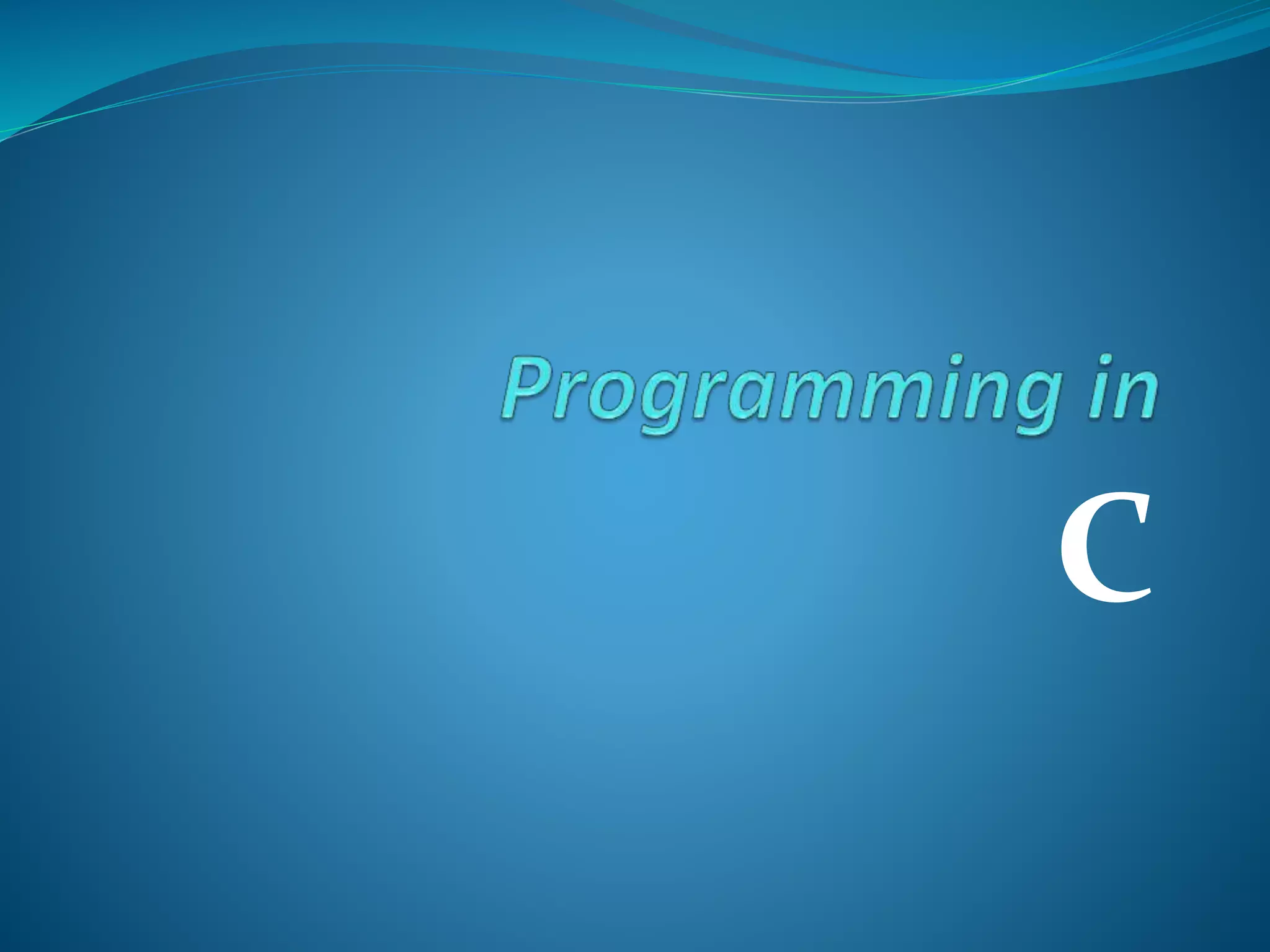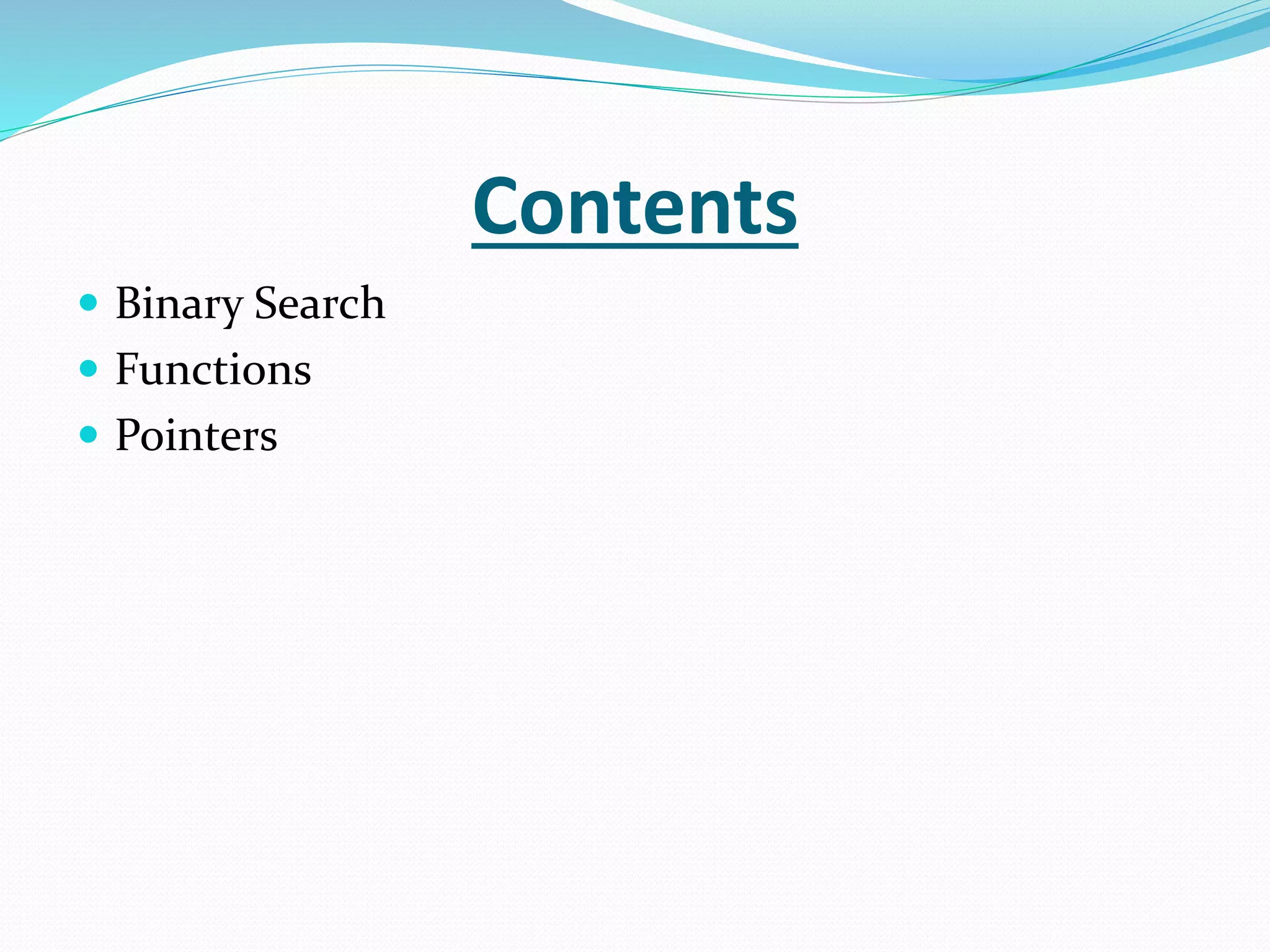The document provides an overview of binary search, functions in C, and memory allocation techniques. Binary search is an efficient algorithm for sorted arrays, while functions are self-contained blocks of code that can be user-defined or library-provided. It also details dynamic memory allocation methods such as malloc, calloc, and realloc for effective memory management during program execution.























![Pointers and Arrays
Since arrays are a contiguous set of variables
in memory, we can access them with pointers
int arr[5];
int *p = &arr[0];
*(p+0) = 1; // arr[0]
*(p+1) = 2; // arr[1]
*(p+2) = 4; // arr[2]
*(p+3) = 8; // arr[3]
...](https://image.slidesharecdn.com/ppt2-140928235036-phpapp01/75/Programming-in-C-sesion-2-24-2048.jpg)








